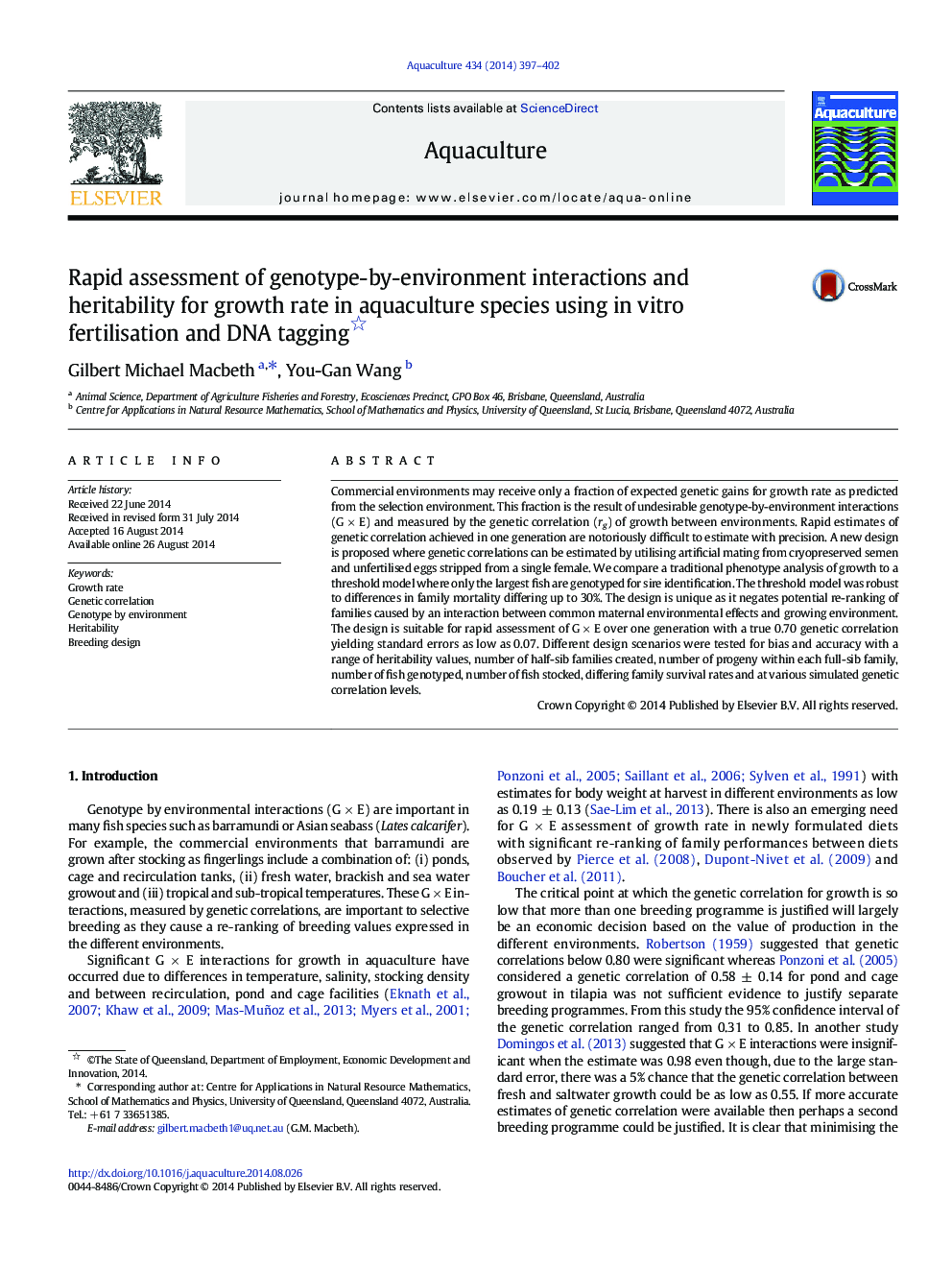| Article ID | Journal | Published Year | Pages | File Type |
|---|---|---|---|---|
| 2421680 | Aquaculture | 2014 | 6 Pages |
Commercial environments may receive only a fraction of expected genetic gains for growth rate as predicted from the selection environment. This fraction is the result of undesirable genotype-by-environment interactions (G × E) and measured by the genetic correlation (rg) of growth between environments. Rapid estimates of genetic correlation achieved in one generation are notoriously difficult to estimate with precision. A new design is proposed where genetic correlations can be estimated by utilising artificial mating from cryopreserved semen and unfertilised eggs stripped from a single female. We compare a traditional phenotype analysis of growth to a threshold model where only the largest fish are genotyped for sire identification. The threshold model was robust to differences in family mortality differing up to 30%. The design is unique as it negates potential re-ranking of families caused by an interaction between common maternal environmental effects and growing environment. The design is suitable for rapid assessment of G × E over one generation with a true 0.70 genetic correlation yielding standard errors as low as 0.07. Different design scenarios were tested for bias and accuracy with a range of heritability values, number of half-sib families created, number of progeny within each full-sib family, number of fish genotyped, number of fish stocked, differing family survival rates and at various simulated genetic correlation levels.
